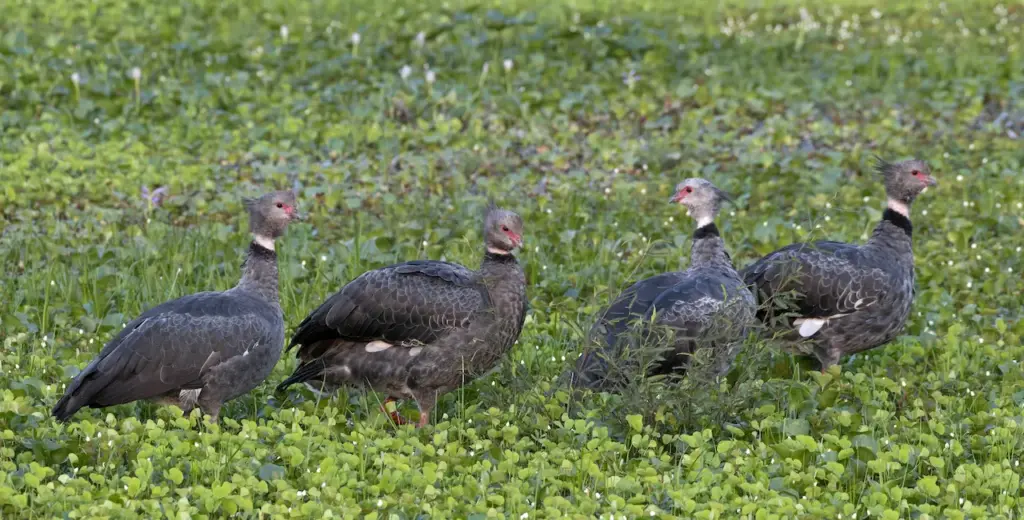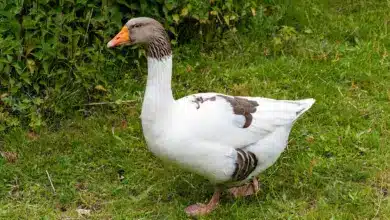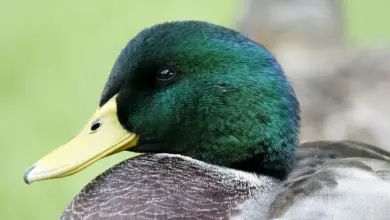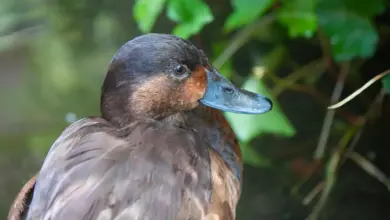The screamers are a small family of birds, the Anhimidae. For a long time, they were thought to be related to the Galliformes because of similar bills, but they are truly related to ducks (family Anatidae), most closely to the Magpie Goose (which some DNA evidence suggests are closer to screamers than to ducks). The family is exceptional within the living birds in lacking uncinate processes of ribs.

The three species occur only in South America, ranging from Venezuela to northern Argentina. They are large, bulky birds, with a small downy heads, long legs, and large feet which are only partially webbed. They have large spurs on their wings which are used in fights over mates and territorial disputes; these can break off in the breast of other screamers and are regularly renewed. Unlike ducks, they have a partial moult, and are able to fly throughout the year. They live in open areas and marshes with some grass and feed on water plants. One species, the Southern Screamer, is considered a pest as it raids crops and competes with farm birds.
Screamers lay between 2 and 7 white eggs, with four or five being typical. The young, like those of most Anseriformes, can run as soon as they are hatched. The chicks are usually raised in or near water as they can swim better than they can run. This helps them to avoid predators. Like ducks, screamer chicks imprint early in life. This, coupled with their unfussy diet makes them amenable to domestication. They make excellent watchdogs due to their loud screams when encountering anything new and potentially threatening.

Both the Southern and the Horned Screamer remain widespread and are overall fairly common. In contrast, the Northern Screamer is relatively rare and consequently considered near threatened. They are seldom hunted, in spite of their conspicuous nature, because their flesh has a spongy texture and is riddled with air-sacs, making it highly unpalatable. The main threats are habitat destruction and increased intensification of agriculture.
Species
- Horned Screamer, Anhima cornuta
- Southern Screamer or Crested Screamer, Chauna torquata
- Northern Screamer or Black-necked Screamer, Chauna chavaria
References
- Carboneras, C. (1992). Family Anhimidae (Screamers). Pp. 528-535 in; del Hoyo, J., Elliott, A. and Sargatal, J. eds. Handbook of the Birds of the World, Vol 1, Ostrich to Ducks Lynx Edicions, Barcelona. ISBN 84-87334-09-1
- Todd, Frank S. (1991). Forshaw, Joseph. ed. Encyclopaedia of Animals: Birds. London: Merehurst Press. pp. 87. ISBN 1-85391-186-0.





